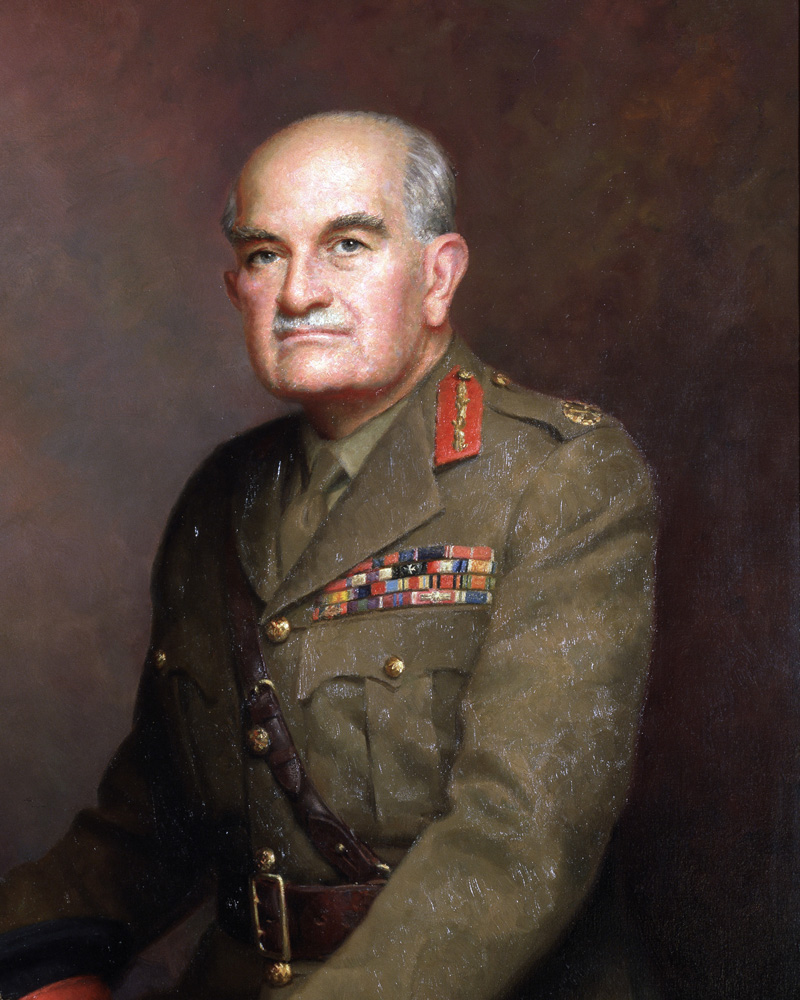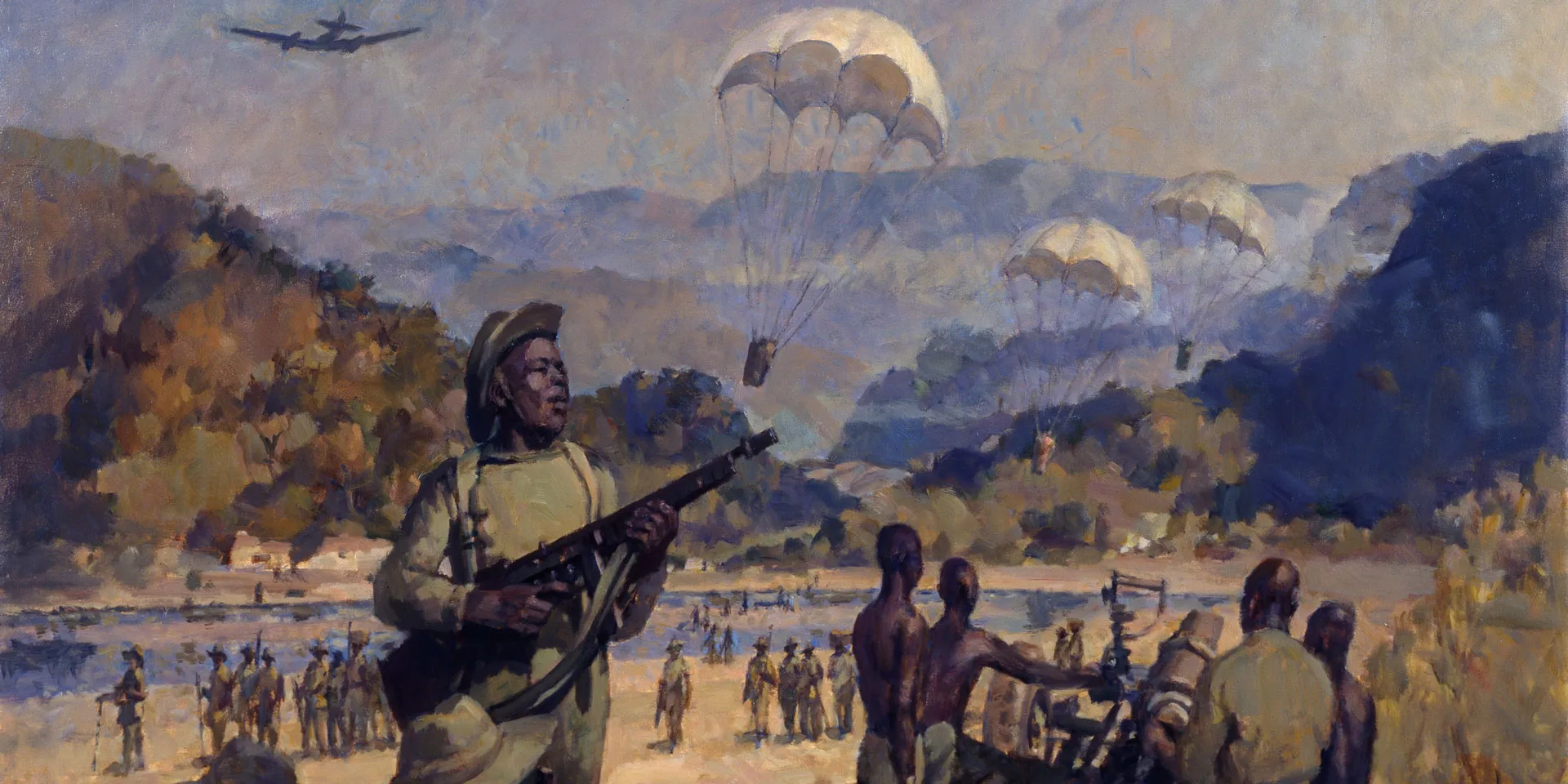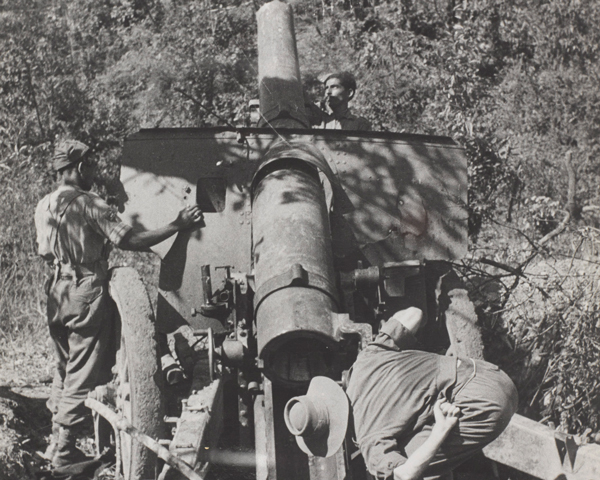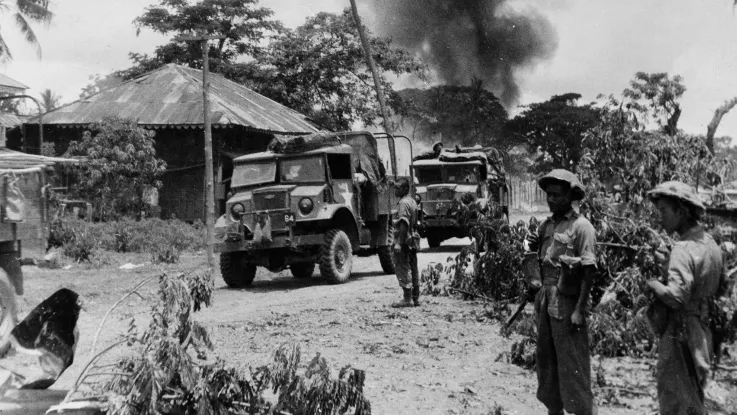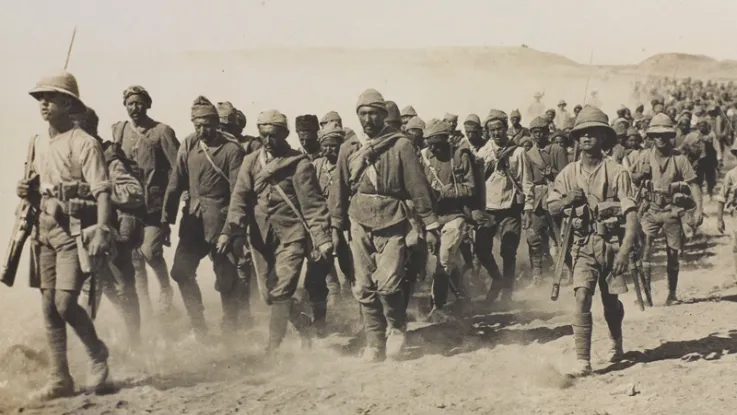Early career
William Slim (1891-1970) was given a temporary commission in the Royal Warwickshire Regiment in August 1914 at the start of the First World War. He served at Gallipoli, where he was wounded, and in Mesopotamia, where he gained a Military Cross. He avoided a return to civilian life by obtaining a permanent commission in the Indian Army in 1918.
His inter-war career was slow. He attended the Quetta Staff College, where his performance resulted in appointments to Army Headquarters in Delhi and then Staff College, Camberley, where he taught from 1934 to 1937.
Promoted to lieutenant-colonel in 1938, Slim commanded 2nd Battalion, the 7th Gurkha Rifles before becoming head of the Senior Officers' School at Belgaum (in what is now the Indian state of Karnataka).
Second World War
As commander of the 10th Indian Brigade, Slim took part in the conquest of Abyssinia (1940-41), where he was again wounded. Promoted to major-general in June 1941, he led 10th Indian Division during the Iraq expedition, the Syria-Lebanon campaign and the invasion of Iran.
Burma
In March 1942, he was promoted to command Burma Corps, which had been chased out of Rangoon (now Yangon) by the Japanese. Heavily outnumbered, Slim was forced to withdraw to India. But he made sure the 900-mile (1,400km) retreat did not turn into a rout, leading a controlled military withdrawal.
Slim then took over XV Corps of the Eastern Army in the Arakan (now Rakhine State) in April 1943. The campaign was a disaster, partly due to the sidelining of Slim by General Noel Irwin, the Eastern Army’s commander. The subsequent fallout led to Irwin’s dismissal and Slim’s appointment as commander of the newly formed Fourteenth Army.
Restoring morale
Slim emphasised the need for jungle warfare training and the use of more aggressive tactics, including the formation of defensive 'boxes' that allowed surrounded units to be supplied by air. But perhaps his greatest contribution was restoring his soldiers' morale.
He was a fine manager of men and able to get soldiers to do his bidding. In return, Slim's men regarded him as one of them. He was, above all, a soldier's soldier.
‘One of Slim’s chief characteristics was his quite outstanding determination and inability to admit defeat or the possibility of it: also his exceptional ability to gain and retain the confidence of those under him and with him, without any resort to panache. Success did not inflate him or misfortune depress him.’Field Marshal Sir Claude Auchinleck — 1946
Imphal and Kohima
Slim undertook a partially successful attack in the Arakan in February 1944. Then, in the battles of Imphal and Kohima, he repelled a Japanese invasion of north-east India.
Both campaigns demonstrated that his new approach worked. The Japanese were able to encircle the formations of the Fourteenth Army, but could not defeat them. They lost over 60,000 men and exhausted themselves in the process.
Victory
Next, Slim drove the Japanese south across Burma (now Myanmar). Fighting through the monsoon and supplied by air, his men crossed the River Chindwin, took Akyab (now Sittwe) in the Arakan, and won bridgeheads across the River Irrawaddy. After fierce fighting, Meiktila and Mandalay were captured in March 1945.
The route south to Rangoon now lay open. IV Corps was only 30 miles (48 km) away when the city fell to a combined air and seaborne operation in May. It was a victory won through the courage and endurance of the troops, and Slim's superb generalship.
‘The finest general World War Two produced.’Admiral Lord Louis Mountbatten, Supreme Allied Commander SEAC — 1946
Later career
After the war, Slim was Commandant of the Imperial Defence College (1946-48) and then Chief of the Imperial General Staff (1948-52).
Between 1953 and 1960, he served as governor-general of Australia. After retiring from that appointment, he was made Viscount Slim on 15 July 1960.


